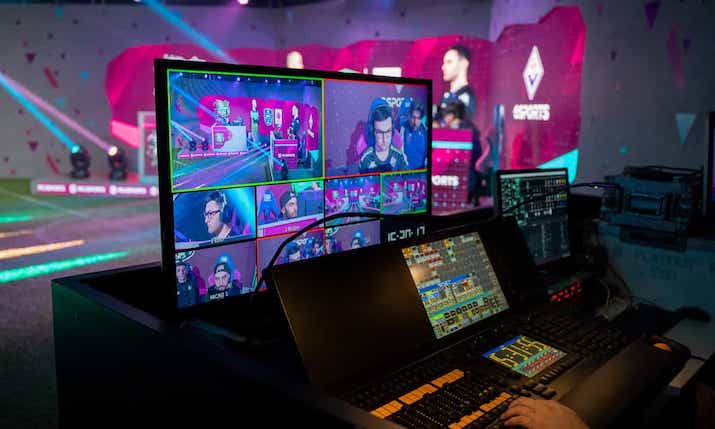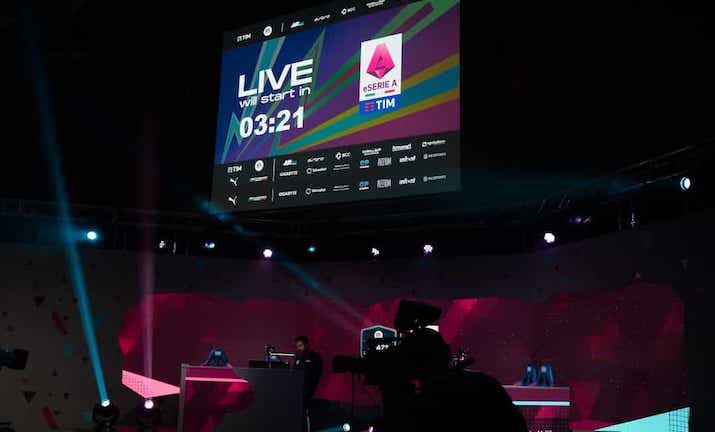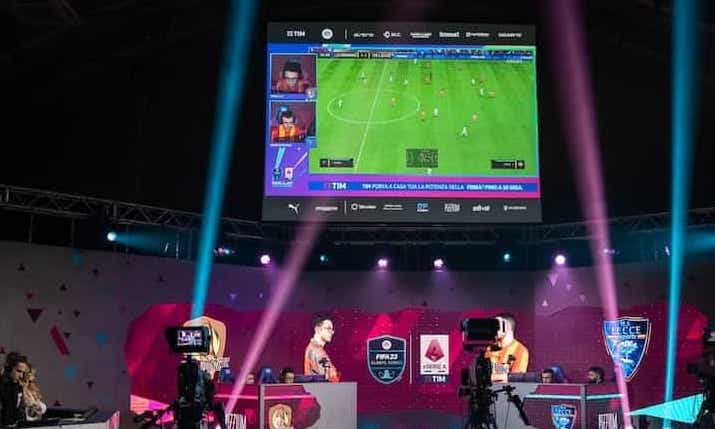Infront brings cutting-edge production to the eSerie A esports series

The eSerie A is broadcast primarily on Twitch
eSerie A TIM, the official FIFA esports league in Italy, features 14 clubs competing across two groups ahead of playoffs and a final eight competition. After online qualifiers last year, the regular season kicked off on 31 January with group A playing until 1 March and group B playing until 15 March.
Each event of the series was broadcast on dedicated channels, with Infront handling the production from its facility in via Deruta, Milan.
“Esports are international-level competitions”, says Alessandro Zampini, head of resources at Infront Productions Italy. “They are followed by millions of people and are based on multiplayer games organised in tournaments that cover everything from battles and strategy to fantasy and driving. They also include ‘traditional’ sports, as in our case, Serie A football. Here the competitions take the form of a league with sponsored teams and pro players who compete against each other individually or in teams.”
“Thanks to the increased availability of internet bandwidth at home, large numbers of people watch competitions via live online streaming,” adds Zampini. “The most popular platforms are Twitch and YouTube, which have channels dedicated to each sport that fans can subscribe to. In football, the ‘one-to-one’ mode is abandoned and each real player controls only one virtual player via a console and, consequently, the matches are really team against team.”
Entertaining the audience
Production of the eSerie A is based in Milan in a facility that has been owned by Soul Movie since the beginning of this year. Here, in studio seven, Infront manages all the production and has editorial spaces and adjoining post-production rooms.
Zampini resumes: “For three years now, the creation, design and management of all these events has been managed by Infront. This is part of a four-year agreement with Lega Serie A. In studio seven, matches come to life thanks to all the technical equipment, the direction, graphics, and the technical staff, including a video mixer, audio mixer, sound engineers, operators and a studio assistant.”
The set up, which involves LED walls for scenery, and all the production, is also managed directly by Infront. The programme includes around ten episodes aired every two weeks from the start of the championship. In recent editions the pandemic led to restrictions on an audience being present and had confined the production to the studio. For this year, however, an outdoor final is planned.

Broadcasts can last for up to five hours
Infront and Lega Serie A did, however, decide against having paying members of the public attending games during the regular season, although stands were created for an audience of 60 people, with seats reserved by invitation and dedicated to members of the gaming community.
Each of the 14 teams in the league has two starters, a reserve and club delegates present at matches. The contests are broadcast live on the Lega Serie A Twitch channel and at the same time digital content is produced and published on the Lega’s social media and YouTube channels.
The signal is also sold to some foreign broadcasters for retransmission in the relevant countries.
Zampini continues: “Television production normally works with a resolution of 1920×1080 50i pixels, while games are in 1080/60P, considered a native 4K signal. Therefore it was necessary to adapt the television system to the new UHD standards. In fact, the event is designed exclusively for digital output, given that the Lega Serie A channel on Twitch is the main output.”
Studio setup
The studio set up features a stage with two main gaming stations on it along with a central LED wall. In the stations, teams alternate the players who go up to compete, accompanied by coaches or teammates. Once the position has been arranged according to the needs of the teams, the matches can begin.
In the studio there is also a station for the ‘casters’ – the three commentators on rotation who lead the broadcast marathon – events can last up to five hours a day for two days a week.
The task of these casters is to comment and analyse the match and offer post-match analysis, so a traditional presenter is not necessary.

Fixed cameras capture the action in the studio
Zampini concludes: “The dynamics of the action have made it possible for shots to be taken by fixed cameras: one is dedicated to the casters and the other two, assisted by operators, take care of all other necessary shots. The main complexity is due to the considerable duration of the live stream which, compared to a normal television broadcast, presents various differences in audiovisual language. This is due to the fact that the audience is different, the target is younger and not used to traditional television. The format is also quite different and there is much more interaction with the public through a chat function.
“The technical crew is made up of 15 to 20 people while the editorial part, which is more complex, employs around 40 people. Ten people are dedicated to the management of the tournament and to the resolution of possible problems in the live stream, with the game consoles and with the connections, which constitute the most complex segment.”
